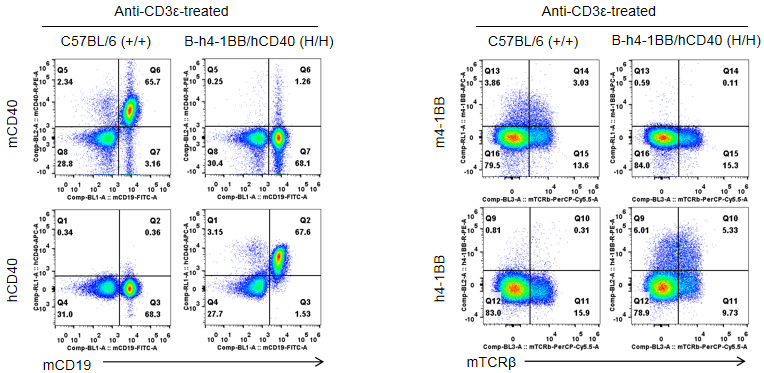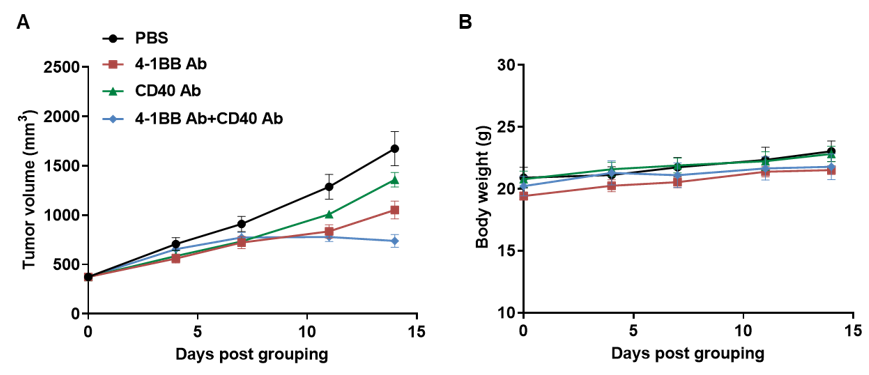


C57BL/6-Tnfrsf9tm1(TNFRSF9)Bcgen Cd40tm1(CD40)Bcgen/Bcgen • 121212
| Product name | B-h4-1BB/hCD40 mice |
|---|---|
| Catalog number | 121212 |
| Strain name | C57BL/6-Tnfrsf9tm1(TNFRSF9)Bcgen Cd40tm1(CD40)Bcgen/Bcgen |
| Strain background | C57BL/6 |
| NCBI gene ID | 21942,958 |
| Aliases | 4-1BB; CD137;Bp50, CDW40, TNFRSF5, p50 |


Antitumor activity of anti-human 4-1BB antibody combined with anti-human CD40 antibody in B-h4-1BB/hCD40 mice. (A) Anti-human 4-1BB antibody (in house) combined with anti-human CD40 antibody (in house) inhibited MC38 tumor growth in B-h4-1BB/hCD40 mice. Murine colon cancer MC38 cells were subcutaneously implanted into homozygous B-h4-1BB/hCD40 mice (female, 6-8 week-old, n=5). Mice were grouped when tumor volume reached approximately 400 mm3, at which time they were treated with h4-1BB and hCD40 antibodies. (B) Body weight changes during treatment. As shown in panel A, combination of h4-1BB and hCD40 antibodies were more efficacious in controlling tumor growth in B-h4-1BB/hCD40 mice. B-h4-1BB/hCD40 mice provide a powerful preclinical model for in vivo evaluation of anti-human 4-1BB and CD40 antibodies. Values are expressed as mean ± SEM.